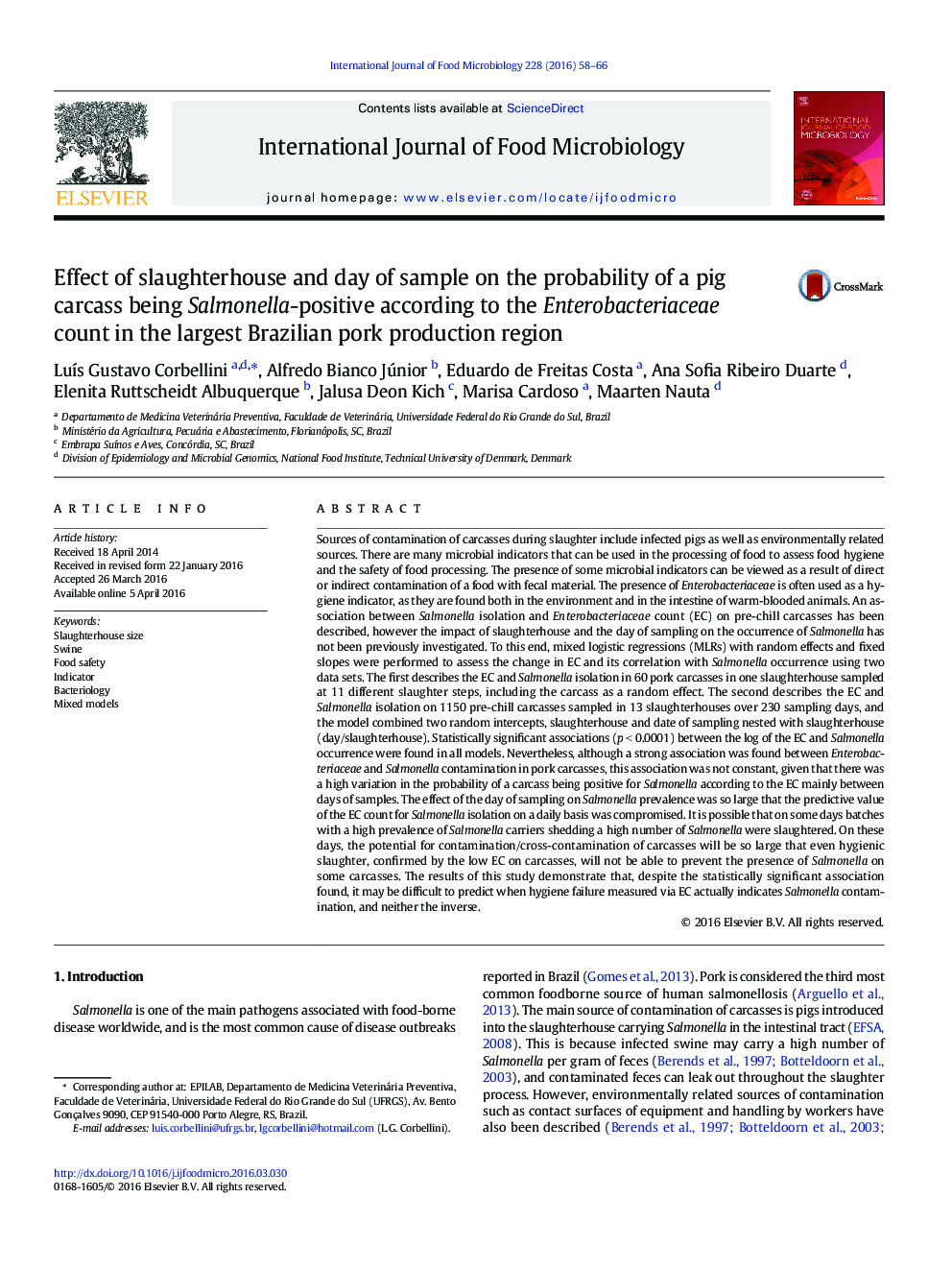| کد مقاله | کد نشریه | سال انتشار | مقاله انگلیسی | نسخه تمام متن |
|---|---|---|---|---|
| 4366269 | 1616555 | 2016 | 9 صفحه PDF | دانلود رایگان |

• We analyzed the correlation between Salmonella and Enterobacteriaceae.
• We fitted three mixed models including source of variation as random effect.
• A high variation in the association occurred mainly between days of sampling.
• Besides the significant association, EC is not a useful indicator of Salmonella.
Sources of contamination of carcasses during slaughter include infected pigs as well as environmentally related sources. There are many microbial indicators that can be used in the processing of food to assess food hygiene and the safety of food processing. The presence of some microbial indicators can be viewed as a result of direct or indirect contamination of a food with fecal material. The presence of Enterobacteriaceae is often used as a hygiene indicator, as they are found both in the environment and in the intestine of warm-blooded animals. An association between Salmonella isolation and Enterobacteriaceae count (EC) on pre-chill carcasses has been described, however the impact of slaughterhouse and the day of sampling on the occurrence of Salmonella has not been previously investigated. To this end, mixed logistic regressions (MLRs) with random effects and fixed slopes were performed to assess the change in EC and its correlation with Salmonella occurrence using two data sets. The first describes the EC and Salmonella isolation in 60 pork carcasses in one slaughterhouse sampled at 11 different slaughter steps, including the carcass as a random effect. The second describes the EC and Salmonella isolation on 1150 pre-chill carcasses sampled in 13 slaughterhouses over 230 sampling days, and the model combined two random intercepts, slaughterhouse and date of sampling nested with slaughterhouse (day/slaughterhouse). Statistically significant associations (p < 0.0001) between the log of the EC and Salmonella occurrence were found in all models. Nevertheless, although a strong association was found between Enterobacteriaceae and Salmonella contamination in pork carcasses, this association was not constant, given that there was a high variation in the probability of a carcass being positive for Salmonella according to the EC mainly between days of samples. The effect of the day of sampling on Salmonella prevalence was so large that the predictive value of the EC count for Salmonella isolation on a daily basis was compromised. It is possible that on some days batches with a high prevalence of Salmonella carriers shedding a high number of Salmonella were slaughtered. On these days, the potential for contamination/cross-contamination of carcasses will be so large that even hygienic slaughter, confirmed by the low EC on carcasses, will not be able to prevent the presence of Salmonella on some carcasses. The results of this study demonstrate that, despite the statistically significant association found, it may be difficult to predict when hygiene failure measured via EC actually indicates Salmonella contamination, and neither the inverse.
Journal: International Journal of Food Microbiology - Volume 228, 2 July 2016, Pages 58–66